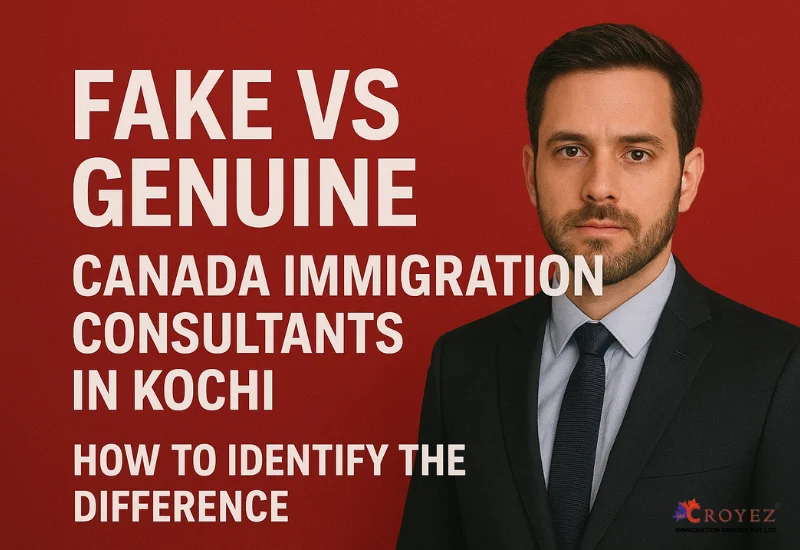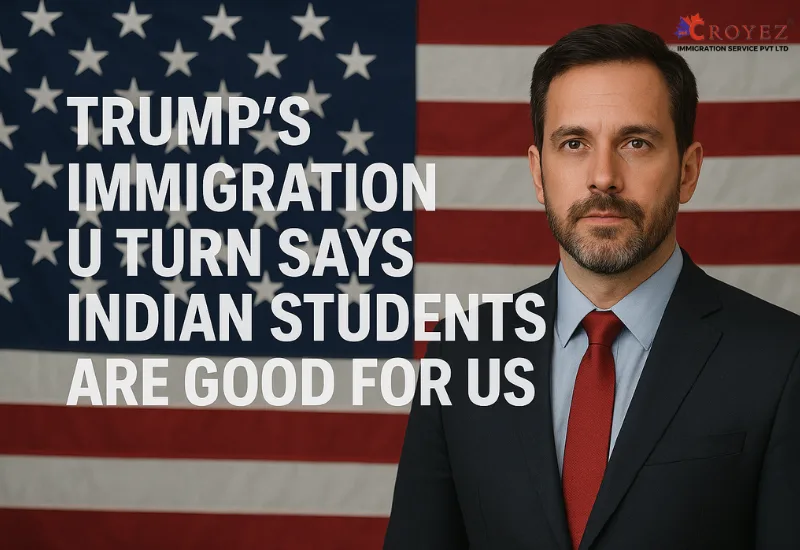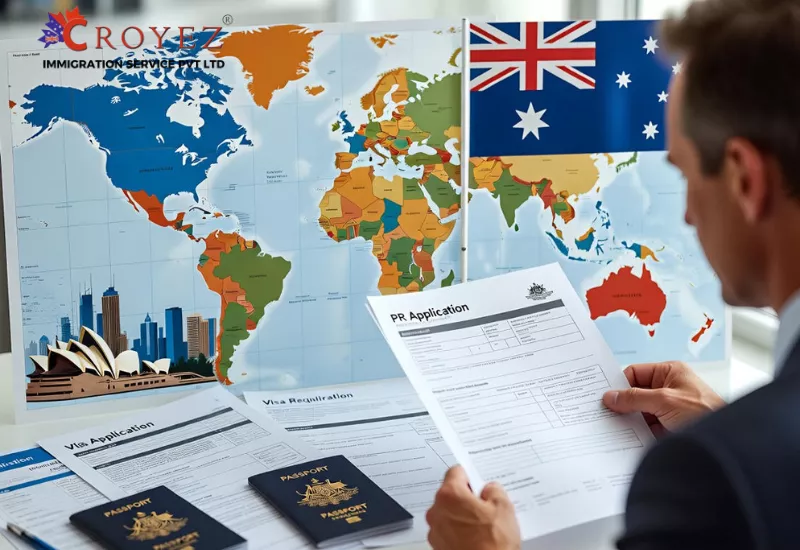"Travel to a new land is always a fantasy: let us make it real." Are you brimming with excitement to start your life in Canada? Do you know the Canadian government proffers several ways to enter Canada? In this blog, I will walk you through the various pathways available to enter Canada. Canada, a well-known country around the world for its magnificent nature, food, culture, and government. A beautiful place to begin your career and your future. Canada proffers many benefits for its immigrants. It will never let you feel that you are in a new land. It will give you the same comfort that you will feel in your homeland.
1. Express Entry System
One of the leading and fastest ways to move to Canada is through the Express Entry system. This program allows immigrants to stay and work in Canada as a skilled worker. This program was amended in Jan 2015. Through this program, either they recruit skilled workers or individuals who possess relevant qualifications to work in Canada. For these immigrants, the government offers 3 federal immigration programs based on their age, education, work experience, and language ability. Express Entry System encloses three main categories:
- Federal Skilled Worker Program (FSWP)
- Federal Skilled Traders Program (FSTP)
- The Canadian Experience Class (CEC).
This system also offers the Provincial Nominee Program (PNP) for the immigrants to choose a specific province to live in.
1. FSW - Federal Skilled Worker
If you are entering Canada through FSW, you will get a chance to live in Canada as a permanent resident if your profile is selected. The Federal Skilled Worker program is designed for immigrants who meet the requirements and wishes to contribute something to the Canadian economy. The individual should possess a minimum diploma of 3 years or a bachelor's degree, 1 year of skilled work experience (0, A, or B), and an IELTS score around CLB of 7. The person needs to secure 67 out of 100 in eligibility points. The eligibility points are calculated with age, education, work experience, language, job offer, and adaptability. FSW encloses three types of job categories :
- Managerial Jobs (skill 0)
- Professional jobs (skill A)
- Technical jobs ( Skill B)
2. FST - Federal Skilled Traders program
FST is mainly for people who want to become Permanent residents of Canada through a particular skill. Here, you should have gained at least 2 years of work experience in specific skills in the past 5 years. The immigrant should also possess a trade certificate from Canada. They should have CLB 5 in listening and Speaking; CLB 4 in reading and writing.
3. CEC - Canadian Experience Class
Are you staying in Canada with continuous skilled work experience? If so, Canada allows you to become a permanent resident. CEC, Canadian Experience Class is brought into reality to give temporary foreign workers in Canada; a chance to become permanent residents. CEC slightly varies from the other two. Here, you should have gained at least 1 year of continuous skilled work experience in the past 3 years under the skilled category (0, A, B). The individuals who come through CEC need not show proof of any settlement funds. They should have got CLB 7 in skill 0 and A and CLB 5 in B.
4. PNP - Provincial Nominee Program
Through this program, you can move into a particular province in Canada as a permanent resident. But before that, you must prove that; you are valuable to that province in Canada. Each province has different eligibility criteria based on its skillset, educational program, work experience, and job offer. If you meet any one of the eligibility criteria; then, the province will welcome you to work there. All other provinces in Canada offer the PNP program, except Quebec, whereas they have their own process.
2. Work Permit
In layman's terms work permit means official document permission issued by the employer to a foreigner to take a job in that country. Canada issues work permits for individuals for a specific period who wish to work over there in Canada. It is one of the great destinations for work across the world. The Canadian work visa permits business people, students, permanent workers, and temporary workers to work in Canada. Work permit falls under two categories: Openwork permit and Employer specific work permit.
1. Openwork permit
Openwork permit allows individuals to come and work in Canada without any prior job offer. But here, you are destined to work only for some time in Canada. Through this work permit, you can work for any employer in Canada except for the companies that do not comply with labour requirements.
2. Employer-specific work permit
As the name suggests, this work permit does need to have permission to recruit an individual from the Canadian authority. This permit does comply with labour requirements based on company rules and regulations. Here, you are allowed to work for a specific employer. This work permit encloses two categories:
- Labour Market Impact Assessment (LMIA)
- Labour Market Impact Assessment(LMIA) Exemption
1. LMIA
The employment and social development of Canada issues a document for hiring a foreign national to work. Here, the employer who wants to hire a foreign national should post about the job vacancy for 90 days in the media. If still, the employer does not get any recruitment of his needs; then, he should apply for LMIA. If he gets a positive response, then; the employer can hire a foreign national for that position with a closed work permit.
2. LMIA Exemption
Through LMIA exemption, the Canadian employer can waive off LMIA certificate to recruit foreign nationals to Canada on certain exemptions. The exempt LMIA is managed through the International Mobility Program (IMP). The exempt LMIA encloses various categories:
- ICT - Intra Company Transfer
- AIPP - Atlantic International Pilot Program
- RNIP - Rural and Northern Immigration Pilot program
- YCPP - Yukon Community Pilot Program
1. Intra Company Transfer - ICT
Are you an employee in a multinational company in a location outside Canada? No worries, through ICT, you can get an LMIA exemption work permit to work in the same company in Canada.
2. AIPP - Atlantic International Pilot Program
Do you want to fly into Nova Scotia, New Brunswick, Newfoundland & Labrador and Prince Edward Island? AIPP, a fast-track immigration program proffers you an option to work in these provinces. It is also a pathway to becoming a permanent residence in Canada. The provinces will welcome the foreign nationals only if they meet the job requirements of that particular province.
3. Rural and Northern Immigration Pilot Program - RNIP
Rural and Northern Immigration Pilot Program is forged in Canada to bring skilled workers to rural communities. This program was created for the welfare of rural people and their development. Under RNIP, there are 11 communities from different provinces.
4. Yukon Community Pilot Program - YCPP
Yukon, the Northern part of Canada, launches the Yukon Community Pilot Program, which is part of the Yukon Nominee Program. This program was launched with an innovative approach for immigrants; to help them to get a work permit if they have already got a provincial nomination.
3. Study Program
Are you interested to study in Canada? The study program, another gateway to enter Canada. Canada proffers various educational programs for international students. It is home to various world top universities: McGill University, University of Toronto, Mc Master University, and the University of British Columbia. Study Program is one of the pathways to become a permanent resident in Canada. International students can enter Canada to study through Canada student visa. Student Program in Canada encloses two categories: SDS and NON- SDS.
1. SDS - Student Direct Stream
Student Direct Stream is a way to process your visa application of a student faster than the usual processing time. The SDS process undergoes some requirements; if you meet those requirements, then; you are eligible for Student Direct Stream.
2. Non-SDS - Non-Student Direct Stream
If a student does not meet the requirements of Student Direct Stream, then; they have to process their visa via Non-SDS.
3. PGWP - Post-graduation Work Permit
Once an international student completes their studies in Canada, then they can work in Canada for a certain period depending on their educational program. The duration of their work permits counts on the timescale of their study program. If the student has taken an educational program for less than 8 months, they are not eligible for PGWP. If their educational program duration is more than 8 months but less than 2 years, then their post-graduation work permit(PGWP) is valid as the same length as their study program. [eg: 1 year educational program = 1 year PGWP] If their educational program is more than 2 years; then, their PGWP is valid for 3 years.
4. Family Sponsorship
You know? Canada proffers you an option to bring your family to Canada. As an immigrant, you can bring in your family through a family sponsorship program to stay with you. Family Sponsorship program engirds three programs:
-
-
- Spouse or Common-law partner sponsorship:
- Parent or Guardian Sponsorship
- Child Sponsorship
-
1. Spouse or Common-law Partner Sponsorship
If you are a permanent resident or Canadian citizen, you can sponsor your spouse or common-law partner to come, live and work in Canada. First, you must be eligible to give them a sponsor at least for three years. Canadian government proffers TRV and opens a work permit for your spouse or common-law partner to work in Canada. Through this, they can even apply for permanent residence in Canada.
2. Parent or Grandparent Sponsorship
If you are a Canadian citizen or permanent resident and if you wish to bring your parents or grandparents to stay with you in Canada, no worries. Canada gives you an option to sponsor them for their stay with you. At first, you must be eligible to give; them a sponsor financially for 20 years. If you cannot, also no worries, you can bring them through Super Visa. Super Visa, a long-term, multiple entry visa for your parents and grandparents. At the initial stage, you can bring your parents or grandparents through a Super Visa.
3. Child Sponsorship
If you are a permanent resident or Canadian citizen, you have a chance to bring your child to Canada through Child Sponsorship. To bring in your child, first, you must be financially stable to sponsor them throughout. Through TRV and Open Study Permit, initial stage, with free education. Once your child becomes PR in Canada, they can get child care benefits.
Conclusion
Canada gives you the best juncture to enrich your cultural experience and livelihood. It gives you many benefits and supports your career growth. Land of maple is welcoming you; to enjoy its ambience, astounding natural beauty, cool breeze of lakes, mountainous landscape, its modern and multicultural cities. Get ready to find new roads and new people in a new land, to encounter a new sky, and start a new life. There are many other ways to move into Canada yet, these are the common pathways to move to Canada.






